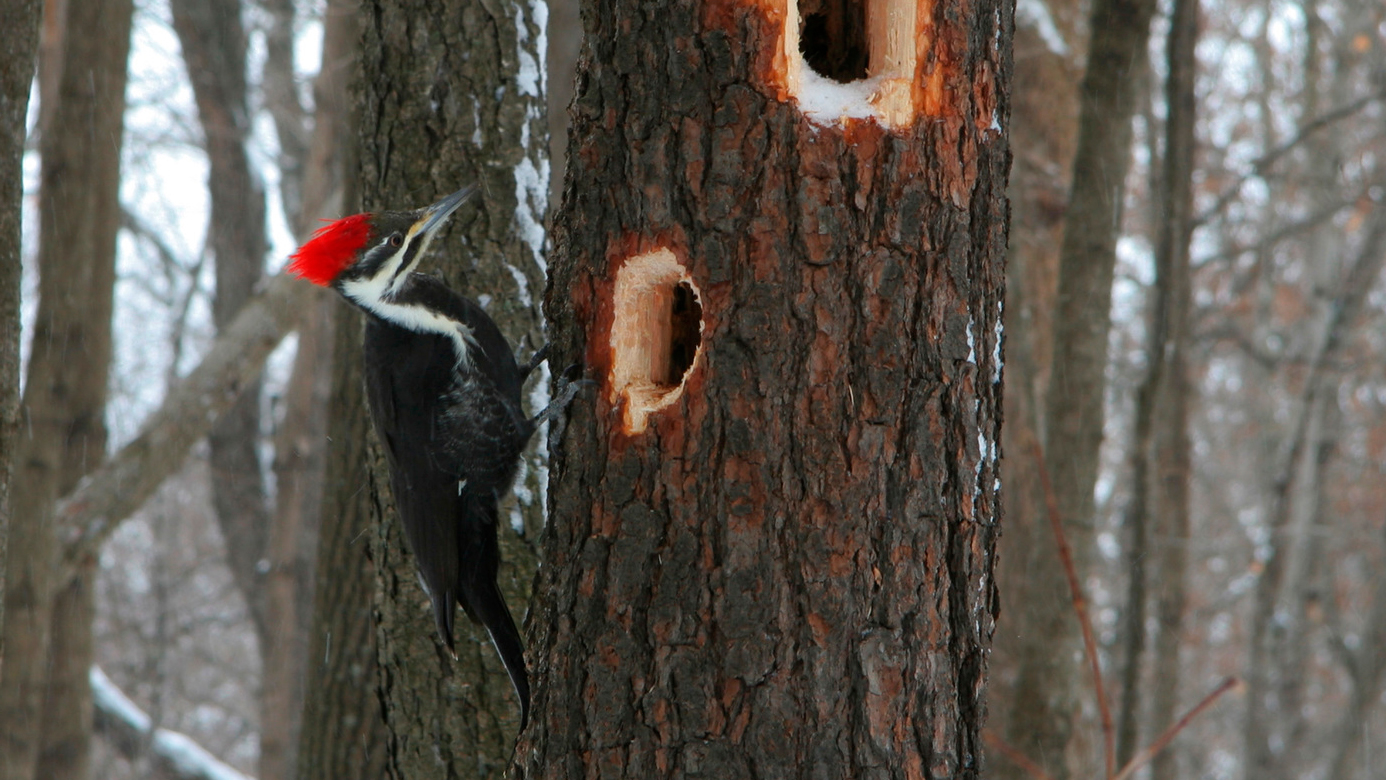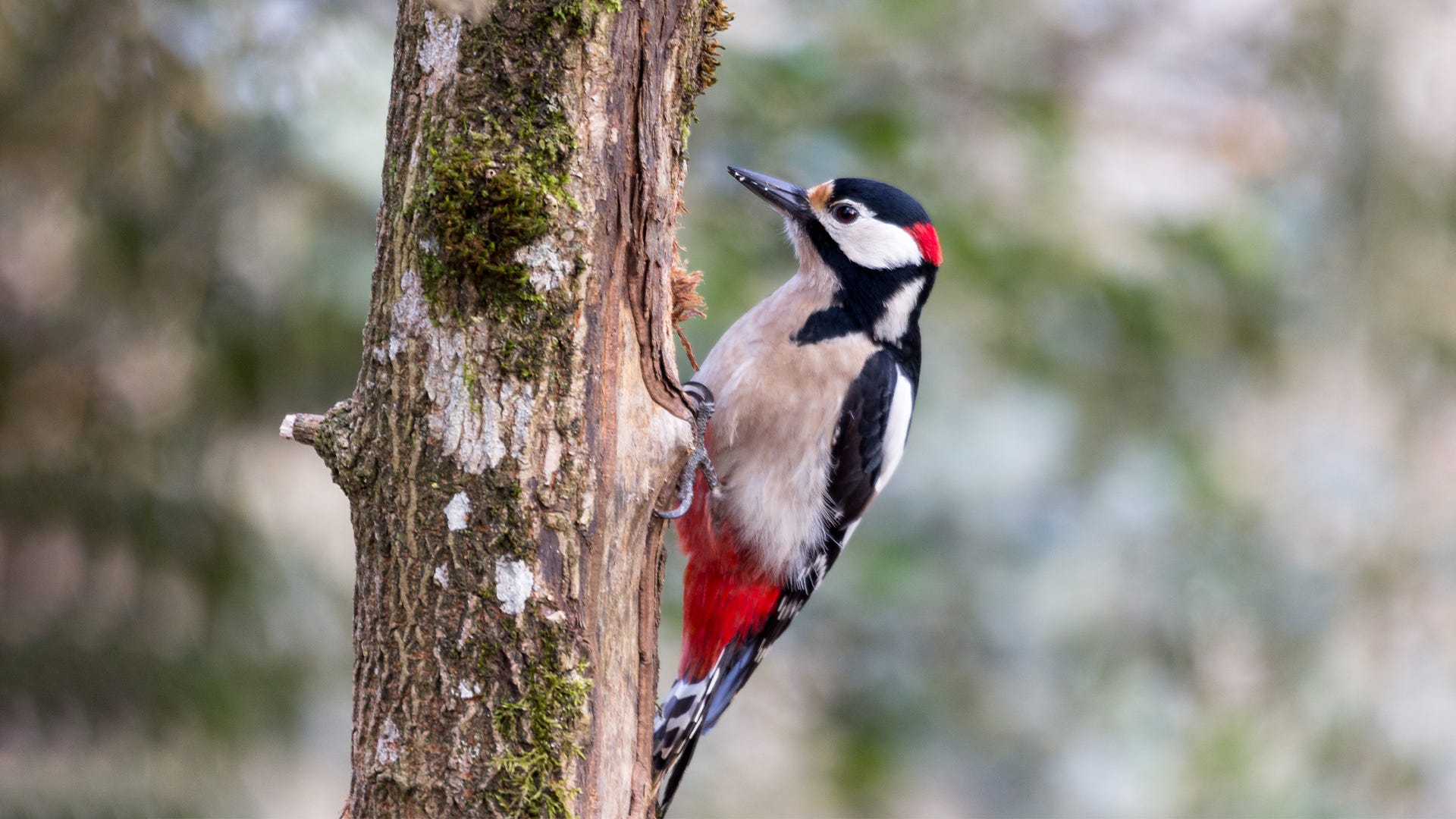Woodpeckers: A Comprehensive Overview to Recognizing These Unique Birds
Woodpeckers, with their distinctive behaviors and physical attributes, have long mesmerized the inquisitiveness of ornithologists and nature fanatics alike. From their rhythmic drumming echoing with the woods to their remarkable adaptations for scaling tree trunks effortlessly, these birds present an interesting research in avian biology. However, what truly establishes woodpeckers apart is not just their striking look yet also their vital function in preserving the delicate balance of ecosystems. As we discover the detailed composition, varied species, and ecological value of woodpeckers, a much deeper recognition for these special birds and the secrets they hold unfolds.

Woodpeckers' Drumming Actions
Woodpeckers exhibit a rhythmic and accurate drumming habits that serves different necessary features in their day-to-day lives. This behavior is mostly connected with communication, territory protection, and foraging. The distinct drumming sound is produced by the rapid pecking of their beaks against difficult surface areas such as tree trunks, branches, or even metal things.
Interaction is a critical element of woodpecker actions, and drumming plays a considerable role in this process. Woodpeckers utilize drumming to develop their visibility, bring in mates, and preserve contact with their companions and children. The regularity, intensity, and period of drumming sequences communicate particular messages to various other woodpeckers in the area.
Along with interaction, woodpeckers utilize drumming habits for territory defense. Woodpeckers in Florida. The loud and recurring drumming functions as a cautioning to prospective intruders, indicating that the area is currently claimed. By developing their territory through drumming, woodpeckers decrease the possibility of disputes over important resources such as food and nesting websites
Furthermore, woodpeckers also use drumming as a foraging method. The rhythmic pecking aids them find bugs concealing underneath the bark of trees by developing vibrations that interrupt the victim's concealment. This actions showcases the versatility and ingenuity of woodpeckers in utilizing their drumming abilities for several essential functions.
One-of-a-kind Adjustments for Tree Climbing
Having mastered the art of drumming to interact, safeguard region, and forage, woodpeckers have actually progressed one-of-a-kind adaptations that promote their amazing climbing up capacities in their arboreal habitats. Woodpeckers have zygodactyl feet, with two toes pointing forward and two toes aiming backwards. These tail feathers supply security and balance, allowing woodpeckers to maneuver up tree trunks with accuracy and agility.
Additionally, woodpeckers have powerful neck muscle mass and a special skull framework that aid in their climbing up capabilities. Their solid neck muscular tissues allow them to quickly eat tree bark without experiencing whiplash, while their thick skull and little brain work as shock absorbers, securing them from the effect of repeated drumming. These adjustments jointly allow woodpeckers to navigate the vertical globe of trees with efficiency and elegance.

Role of Woodpeckers in Environments
By foraging for pests under the bark of trees, woodpeckers aid manage insect populations, stopping break outs that can damage the overall health and wellness of the forest. Furthermore, woodpeckers produce dental caries in trees that serve as critical nesting websites for a variety of other bird types, promoting biodiversity within the environment.
Additionally, the drumming and vocalizations of woodpeckers play a crucial function in communication and territory establishment. These audios not only serve to attract friends yet also aid specify limits in between different woodpecker areas, minimizing conflicts and promoting an unified conjunction within the forest community. Generally, the existence of woodpeckers in woodland ecological communities highlights their importance as keystone types, affecting the characteristics and functioning of these habitats in multifaceted ways.
Anatomy: Specialized Beaks and Feet
In the intricate internet of forest environments, the specialized beaks and feet of woodpeckers useful site are necessary adjustments that allow them to satisfy their critical ecological roles. Woodpeckers have special anatomical functions that are particularly made to assist them in their foraging and nesting actions.
One of the most distinctive function of woodpeckers is their solid, chisel-shaped beaks. These beaks are perfectly adapted for boring into wood to discover bugs, larvae, and sap covert beneath the bark of trees. The solid muscular tissues and sturdy structure of their beaks allow woodpeckers to eat a price of approximately 20 times per secondly without creating damage right here to their skulls.
Additionally, woodpeckers have specialized feet that aid in their acrobatic climbing abilities. Their feet Clicking Here have two toes aiming onward and two toes aiming in reverse, supplying a strong grip on vertical surface areas (Woodpeckers in Florida). This special foot plan, along with rigid tail plumes that function as an encouraging prop, permits woodpeckers to cling to tree trunks and branches with ease while they search for food or excavate nesting tooth cavities
Woodpecker Types Diversity
What aspects contribute to the exceptional diversity of woodpecker types across different habitats and areas? Woodpeckers are a varied team of birds discovered across different environments worldwide, with over 200 recognized types exhibiting adjustments to different atmospheres. One essential element driving this diversity is the schedule of ideal environments. Woodpeckers have developed to inhabit a range of environments, from forests and forests to grasslands and deserts, each providing special difficulties that have affected the development of unique woodpecker species.
These adaptations enable woodpeckers to forage effectively in their corresponding environments, lowering competition among types and advertising particular niche distinction. Additionally, geographic isolation and historic variables have actually played a role in forming the circulation and variety of woodpecker varieties, leading to the wide range of specialized adaptations seen in these interesting birds.

Conclusion
To conclude, woodpeckers are remarkable birds that display distinct drumming actions, specialized adjustments for tree climbing, and play important duties in environments. Their anatomy, consisting of specialized beaks and feet, allows them to grow in their atmosphere. With a diverse variety of woodpecker species discovered worldwide, these birds are important for keeping the health and wellness and balance of forests and timberlands. Comprehending and valuing the ins and outs of woodpeckers can provide useful insights right into the natural globe.